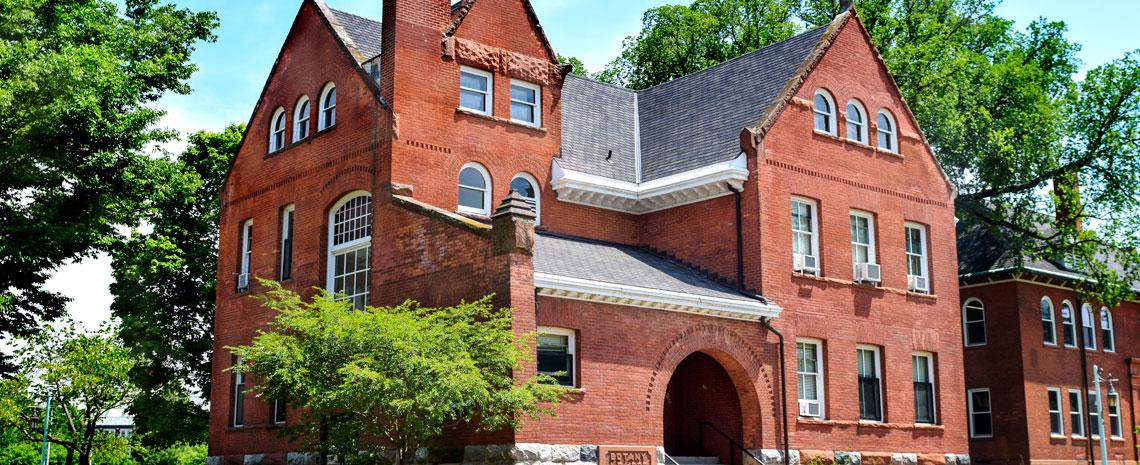Maintaining a large university campus: capital renewal

April 17, 2024
Michigan State University, which has been steadily evolving its infrastructure since its establishment in 1855, has developed a wide range of infrastructure that must be maintained.
That involves much more than just ensuring the grass is mowed and the buildings are clean: it requires strategic planning, financial investment, and ongoing maintenance to keep the campus infrastructure functional and beautiful.
One critical aspect of this maintenance is capital renewal—a process that ensures the longevity of campus facilities.
Capital renewal is the process of systematically replacing or upgrading major campus infrastructure components to ensure facilities stay functional, safe, and operate efficiently. This includes everything from replacing aging roofs to plumbing, heating and cooling, fire and safety systems, walkways, electrical systems, and other pieces of critical infrastructure.
So how do we keep track of what needs to be maintained, upgraded, or replaced?
The Asset Lifecycle
All facilities have a life cycle. If you're a homeowner, you may have a checklist to remind you of important yearly maintenance tasks such as replacing your furnace filter. With regular maintenance like filter replacements, you can expect to get the industry average 15-20 years out of the furnace before replacement is needed. In 15-20 years, technology has likely advanced, repair parts have become obsolete, and the unit is no longer as efficient as it once was. It begins to show signs of reduced performance and eventually becomes too costly to maintain or fails.
A successful capital renewal program aims to be proactive in planning to ensure the facilities remain mission capable and strategic in execution to minimize disruption to building occupants. Now imagine planning and prioritizing the renewal needs for over 570 buildings with plumbing, furnaces, elevators, gutters and foundations of different ages, conditions, locations, and materials.
Facility Condition Assessments
A facility condition assessment (FCA) is a comprehensive visual inspection of a facility’s building systems and elements (like masonry, roofing, plumbing, electrical and mechanical systems). All the data from FCAs is stored in IPF’s database and used to prioritize work and forecast future funding needs.

The challenges of capital renewal
There are many challenges to capital renewal on MSU’s campus, not least of which is the diversity of age in our facilities. IPF is responsible for maintaining facilities from Cowles House on the north side of campus, built in 1857 with traditional building materials, to the STEM Teaching and Learning Facility, completed in 2021 using a mass timber design and state-of-the-art utilities. The maintenance needs vary vastly between different types of facilities, and often they require specialized (or even discontinued) parts and equipment that can’t just be ordered from a big box store.
MSU’s infrastructure is also expanding as the teaching, learning and research needs of the university expand. At this moment, the Multicultural Center, Student Recreation and Wellness Center, and new Farm Lane Bridge are actively under construction. Once they’re built, they will have ongoing maintenance needs.
There is also a capital renewal backlog—a list of major maintenance, repairs, replacements, and capital projects which historically have not been funded but will need to be addressed in the future. The resources required to maintain and reinvest in campus infrastructure often far exceeds an institution’s available funding. This is also known as deferred maintenance/renewal and is endemic to many postsecondary institutions.
In addition to more obvious factors like frequency of use, safety, and accessibility, many factors are taken into consideration when prioritizing capital renewal projects including academic program needs, larger institutional priorities, energy conservation and historic preservation. IPF is wrapping up a five-year initiative to assess the majority of campus facilities, which will continue on a rolling basis so condition information is updated periodically.
Want the inside scoop on how IPF maintains MSU’s facilities? Check out our Behind the Scenes @ MSU series! And you can learn more about IPF’s strategic framework for future infrastructure development in Vision 2050: An Integrated Facilities and Land Use Plan.
